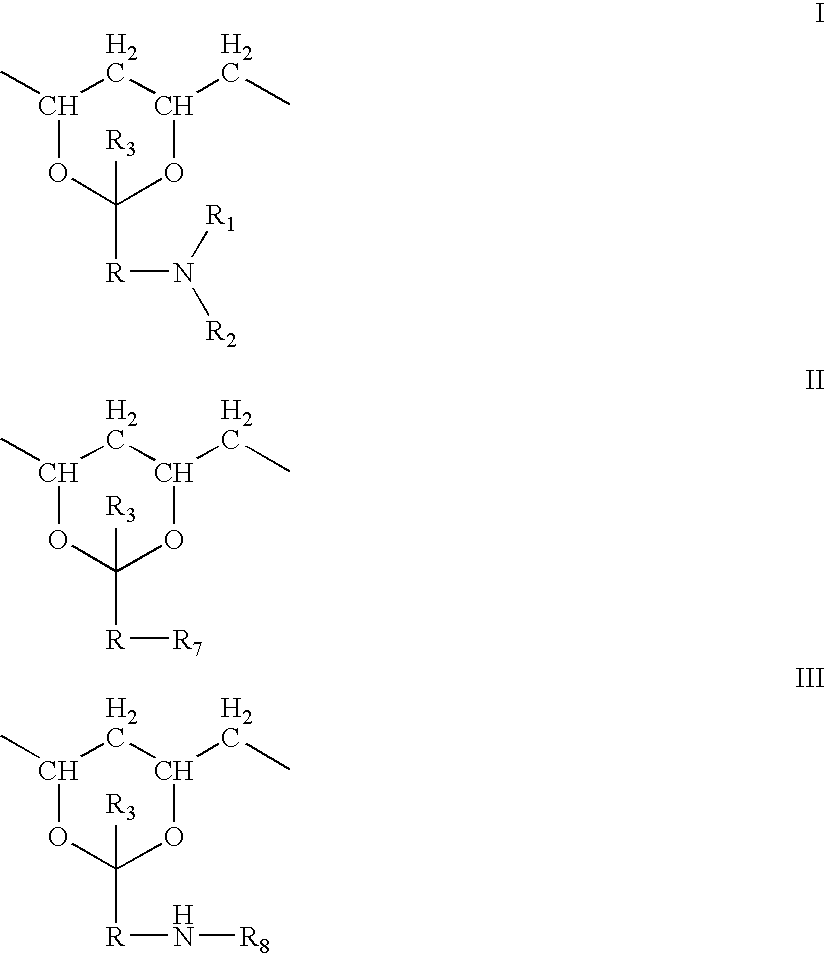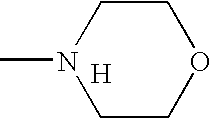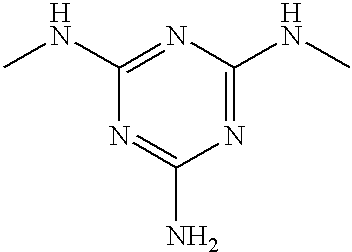Ink formulations and uses thereof
a technology of formulations and inks, applied in the field of ink formulations, can solve the problems of lack of consistency, difficulty in multiple color layering, time-consuming, etc., and achieve the effect of minimal drying or crusting effect and good adhesion to medical devices
- Summary
- Abstract
- Description
- Claims
- Application Information
AI Technical Summary
Benefits of technology
Problems solved by technology
Method used
Image
Examples
example 1
[0111]This example illustrates how to prepare a master batch of an ink.
[0112]A master batch of black ink is prepared by grinding 87 g (30% by weight) iron oxide black (pigment), 40.9 g (14%) nelfilcon (acrylated-poly(vinyl alchohol) and 162.1 g (56%) water with an attritor grinding system. The attritor grinding system is developed using a solid Teflon single milling impeller (EMS T60, BYK Gardner) connected to ⅜″ stainless steel shaft. The shaft is driven by an Arrow 6000 1 / 10 hp direct drive mixer. Approximately 200 ml Zirconia beads (1.6-2.5 mm diameter, BYK Gardner) are placed in a 500 ml stainless steel water-jacketed container (500 ml capacity, BYK Gardner) along with the Teflon impeller head Typical impelling speed is 2200 rpm. The pigment (iron oxide black) is added, followed by the nelfilcon and the water. The impeller speed is set at 1000 rpm and allowed to grind over a 72 hours period. The beads are removed by pouring the resulting liquid through a mesh.
[0113]A master batc...
example 2
[0127]A water-based cyan inkjet ink (A1) is prepared from a master batch of PCN ink as prepared in Example 1 (11.7% PCN blue, 18.9% nelfilcon and 69.4% water). The cyan inkjet ink having a composition of 7.8% nelfilcon, 1% PCN blue, and 90.2% water is prepared by dilution the maser batch of PCN ink with water or nelfilcon prepolymer. This inkjet ink has a surface tension of 43.5 mN / m and a viscosity of 11.90 cPs.
[0128]Ink A1 is jetted using a 50 μm MicroFab inkjet head. Continuous jetting is possible using a square pulse, 1100 Hz, 60 V pp, 32.8 μsec pulse width. Ligaments, satellites and other jetting instabilities are observed. Such jetting instability typically provides poor print quality, resulting in stray lines, drops, or smears.
[0129]To study effects of surface tension on the printing quality of a color pattern on a polypropylene mold, surface tension is adjusted by adding different amounts of IPA while varying the amount of water in cyan inkjet inks. As shown in Table 1, as t...
example 3
[0148]FreshLook male polypropylene molds are printed with a PCN ink (6% nelfilcon as binder, 1% PCN blue as colorant, 0.15% Surfynol 420 as surfactant, 1% glycerine and 3.75% diethylene glycol as humectants, 88.10% water). A FreshLook color pattern is produced on each male molds using an ink jet printing system as described in a co-pending U.S. patent application (U.S. application Ser. No. 10 / 797,707). The ink jet printing system comprises a 50 μm Microfab print head that can be positioned precisely at predetermined position by moving the male mold under control of a computer along three axes. The male mold can be moved linearly, moved toward to or away from the print head along a translational axis, rotated around a rotational axis which passes through the apical center of the curvature surface of the male mold in normal direction, or tilted around a tilting axis.
[0149]The molds are corona treated before and after printing to check if the treatment is affecting the printing quality...
PUM
| Property | Measurement | Unit |
|---|---|---|
| viscosity | aaaaa | aaaaa |
| surface tension | aaaaa | aaaaa |
| particle size | aaaaa | aaaaa |
Abstract
Description
Claims
Application Information
 Login to View More
Login to View More - R&D
- Intellectual Property
- Life Sciences
- Materials
- Tech Scout
- Unparalleled Data Quality
- Higher Quality Content
- 60% Fewer Hallucinations
Browse by: Latest US Patents, China's latest patents, Technical Efficacy Thesaurus, Application Domain, Technology Topic, Popular Technical Reports.
© 2025 PatSnap. All rights reserved.Legal|Privacy policy|Modern Slavery Act Transparency Statement|Sitemap|About US| Contact US: help@patsnap.com



